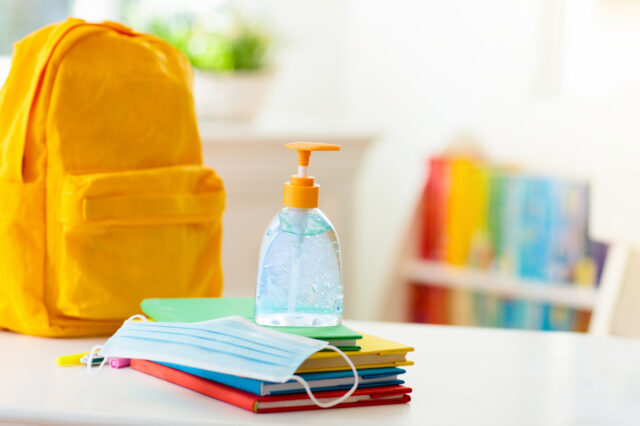Top Questions Answered about Health and Safety at Schools During COVID-19
As the school year progresses and flu season begins, students who are attending classes in person should continue following health and safety protocols to reduce the spread of COVID-19 and other illnesses.

As the school year progresses and flu season begins, students who are attending classes in person should continue following health and safety protocols to reduce the spread of COVID-19 and other illnesses. Most schools have instilled guidelines for all faculty and students to help protect each other. Parents and students can also do their part to stop the spread.
What can students do at school to protect themselves and each other?
Parents may be worried about their kids being back in school. Parents can check their school district’s website for the latest COVID-19 mitigation efforts and guidelines. Most local school districts have implemented the following:
- Distancing: Requiring at least six feet of physical space between students in classrooms and hallways. Class sizes are limited and desks are spread apart. Some school districts have installed shields on desks as a barrier between students.
- Cohorting classes: The same group of students is kept together all day in the same classroom, instead of students changing rooms.
- Hand hygiene: Strongly encouraging frequent hand-washing and use of hand sanitizer if soap and water aren’t available. Sharing textbooks and school supplies is also discouraged.
- Stay home when sick: Schools are urging parents and caregivers to keep their kids at home if they are sick, even with a cold.
- Face coverings: Schools are requiring, and some even providing, face coverings to school-age children as a means to lessen the transmission of the virus and other illnesses when students speak, sneeze or cough. It’s important for students to wash or sanitize hands before putting masks on after taking them off. Students shouldn’t share their mask with other children. If they are wearing reusable masks, they should wash them before wearing again, which also helps avoid maskne. Students wearing disposable masks should wear a new mask each day. Parents should consider adding a back-up mask into their children’s backpack, in case the mask gets wet or dirty from school activities.
What can students in multigenerational homes do to protect family members?
Multigenerational homes or homes with family members who are immunocompromised unfortunately have a higher risk of severe illness if these members contract the virus. These families can take several measures to keep each other safe and lower their risk of contracting COVID-19.
- Monitor for symptoms closely: If any children who are going to school develop symptoms, then immediately have them stay in their room and use their own bathroom.
- Consider COVID–19 testing: Students showing symptoms related to COVID-19 should try to get tested as soon as possible, so that appropriate quarantine guidelines can be followed.
- Wear masks when necessary: If students or family members are sick or exhibiting COVID-19 symptoms, they should wear a face covering when near others or leaving their room.
What’s the safest school transportation method?
Parents who are able to drive students to school should try to keep their car to immediate family or those in their household only. If they have to carpool, students and parents who don’t live in the same house should wear masks inside the car to avoid the spread of respiratory droplets.
Not all students have the luxury of getting a car ride to school. School buses are providing safe transportation by implementing new guidelines, including:
- Limiting capacity: Buses are only allowing small groups of students on each bus route in order to allow physical distancing between drivers and students.
- Face coverings: Everyone must wear masks on bus, including the drivers.
- Open air: Bus windows are to be kept open unless not permitted by weather.
- Staggered seating: Buses are allowing only one student per seat, unless students are from the same household.
This school year will be a learning curve for all students, faculty and parents. If everyone takes these precautions, it can help reduce the spread of COVID-19 and other illnesses. If parents have other questions about their children’s health, they should contact their primary care provider. On-site and Virtual Visit appointments are available.